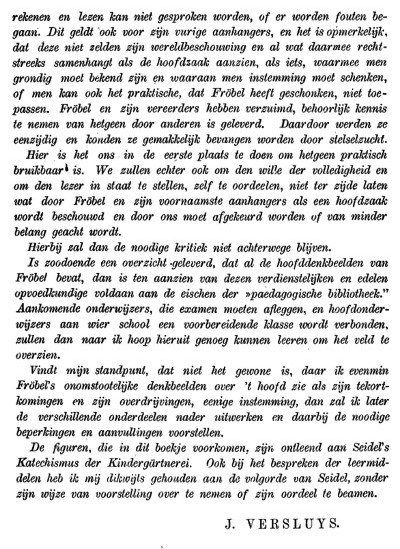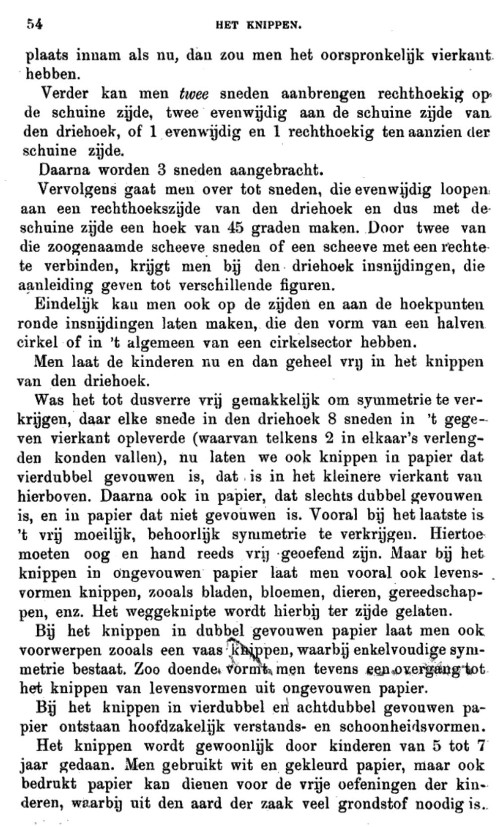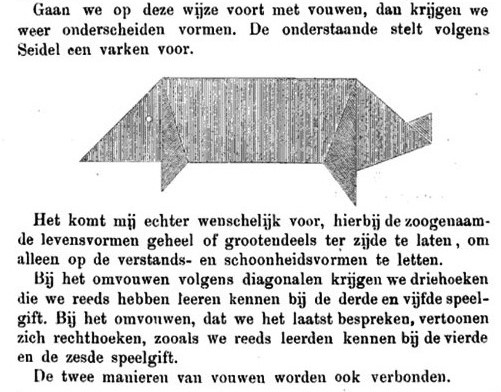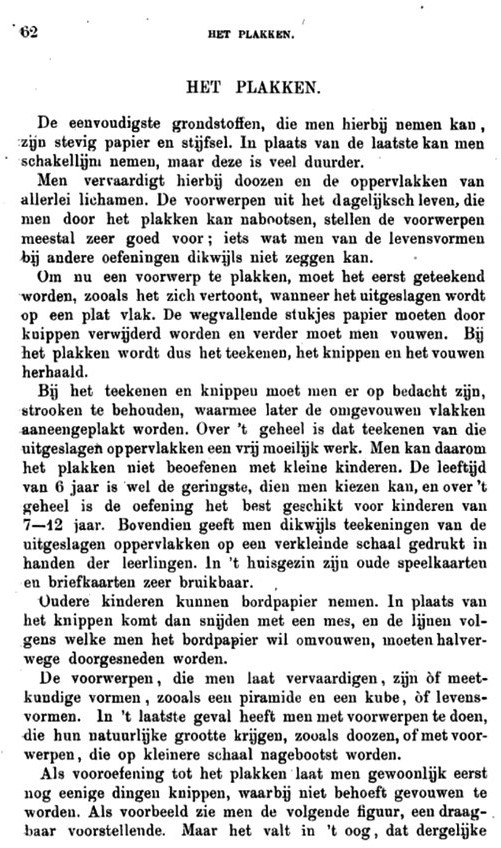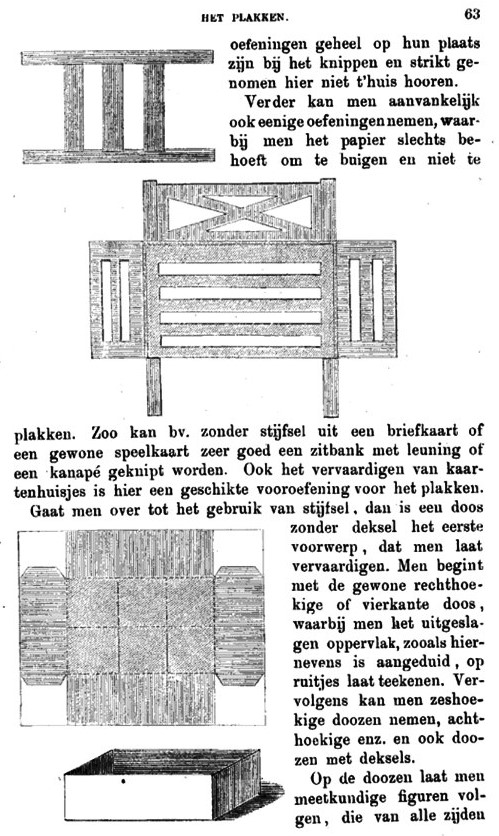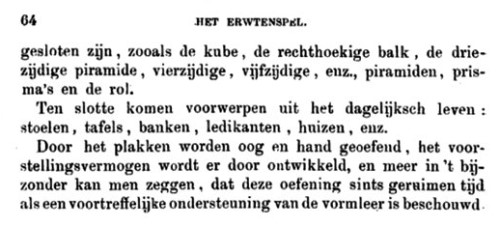| The Public Paperfolding History Project
Last updated 5/11/2025 x |
|||||||
| Paedagogische Bibliotheek VI: Frobel by J Versluys, 1879 | |||||||
'Paedagogische Bibliotheek VI: Frobel' by J Versluys was published by W Versluys in Groningen in 1879. This work is an overview of Froebel's theory and teaching methods. The illustrations are taken from 'Katechismus der praktischen Kindergärtnerei' by Friedrich Seidel. While the text is largely based on the text of the earlier work it includes substantial interpolations by the author and it seems safer to treat it as an entirely new book and provide a full Analysis.
The Foreword is largely an uncomplimentary critique of Froebel's language and writing style. The author is also critical of the use of verbal descriptions of, or names for, paperfolds, particularly to describe Folds of Life, which he would probably remove from the Froebelian curriculum completely. A full copy of the work can be accessed online here. **********
**********
********** Analysis Het Klippen - Ausschneiden und Aufkleben The square is first folded into an eight-layer right-angle isosceles triangle, then cuts are made to turn it into first an octagon (usually irregular), a cross and a frame.
********** Het Snoeren - Verschnuren 'This involves using strips of paper formed by folding an elongated piece of paper lengthwise. This creates strips with a certain degree of strength.'
Het Vouwen - Falten 'When folding, a square piece of paper is used as a base, which can be white or coloured or printed or previously written on.'
********** How to Make Squares from Rectangles This section describes how to make a square from a rectangle by folding the short edge onto the longer and cutting off the excess.
********** Starting from Triangles This section says, roughly translated: 'Following Koehler, a triangular piece of paper is sometimes used as a starting point, and I think this is a good observation. However, for the sake of brevity, in the following we will on ly use the square as a starting point.'
********** The Closed Envelope / The Windmill Inter alia, the author says, roughly translated: 'the student learns that a square is divided into two equal parts ... However, it is not advisable to have such properties expressed in words ... as is often done in Froebel schools ... the theory of form lies not in words but in seeing and experiencing.' The passage goes on to explain how to blintz a square so that 'the whole thing resembles a letter envelope', one flap of which can be opened out to create a pentagon. The author also says: 'If a child calls a shape like the one shown here a windmill, don't be surprised ... But whether it is advisable to tell the child that this figure represents a windmill is another question, and one I wouldn't readily answer in the affirmative.'
********** Koehler's Groundform The author then describes how to fold Koehler's Groundform, then adds: 'It is remarkable how everything of this nature found in Froebel and many others is inaccurate or wrongly handled.'
********** The Pig The author says: 'If we continue folding in this manner we again get distinct shapes. According to Seidel, this one represents a pig. It seems to me, however, advisable to leave the so-called life forms enturely, or largely, aside, in order to pay attention only to the forms of knowledge and beauty.'
********** Het Plakken - Cardboard Modelling The author notes that: 'The objects from everyday life that can be imitated by het plakken usually represent the objects very well, something that often cannot be said of the life forms in other exercises.' **********
********** |
|||||||



